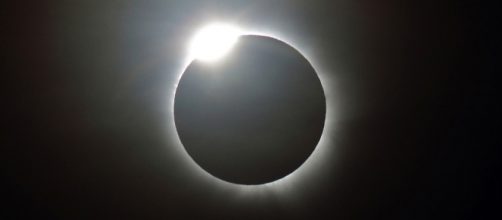On August 21, the Great American Eclipse will cut through mainland America. The U.S mainland hasn’t had a total solar eclipse since 1979.
Most eclipses go completely unseen
According to NASA, a Total Solar Eclipse is when the sun, moon, and Earth are all directly in a straight line. During this time, the disc of the moon appears to completely cover the sun’s disc in the sky: and both the moon and the sun will appear to be roughly the same size, from the Earth.
There’s a total solar eclipse somewhere on Earth once every 18 months or so. That's two totalities for every three years, notes SPACE.com.
“But most of those eclipses go almost entirely unseen. Often the narrow zone of totality — where the sun is completely blocked out — falls over the oceans, and cloud cover blocks those precious minutes of totality over land,” explains a ScienceNews report.
As the American space enthusiasts gear up to revel in the cosmic spectacle that’ll occur on Monday, let’s take a look at how the animal and plant kingdoms react when they see the sun suddenly snuff out in the middle of the day.
Some animals perceive it as nighttime
During a total eclipse, the sky darkens to twilight level as stars appear over the horizon. Temperature drops and the wind speed decreases. The animals become confused and change their behaviour in response.
As a result, “dairy cows return to the barn, crickets begin chirping, birds either go to roost or become more active,” states National Geographic.
Similarly, bats start flying, frogs begin to croak while bees and ants return to their nests.
When a total solar eclipse occurred in July 1991, researchers studied the responses of colonial orb-weaving spiders in tropical Veracruz, Mexico. The spiders acted normally until totality, “when many began taking down webs. After solar reappearance, most spiders that had begun taking down webs rebuilt them,” note the researchers in the 1994 study titled ‘Behavior of Colonial Orb-weaving Spiders during a Solar Eclipse.’
“During previous eclipses, elephants in Africa have been spotted heading back toward their sleeping areas, while chimps in a zoo stared at the sky, "baffled by what was going on," says Bruce Stein of the National Wildlife Federation, in a USA TODAY report.
‘The smarter animals freak out’
Some scientists have also noted that they've seen dolphins and whales rising to the surface in groups just before a total solar eclipse. "The smarter animals freak out," Douglas Duncan, director of the University of Colorado's Fiske Planetarium tells Time.
“Studies in the ’60s and ’70s reported that small, light-sensitive crustaceans and zooplankton swam upward toward the dark during eclipses, similar to how the tiny animals behave at night,” explains ScienceNews.
“Fishermen have reported changes in how the fish hit their lines during an eclipse,” Rob Young, a marine science professor at Coastal Carolina University tells The Island Packet. Marine predators that hunt mainly at dawn and dusk start to bite more, adds Young.
As for pet animals, dogs and cats “may be confused by a total solar eclipse, or in some cases even frightened, but probably less so than with fireworks or thunder”, states a Mother Nature report.
Plants may attempt to get in their night positions
Douglas Bielenberg, a plant physiologist notes in The Newsstand report that during an eclipse, plant circadian rhythms could be affected and plants could attempt to get in their night positions even though the night is still some hours away.
As for crops, any light or temperature changes that hit them during the solar eclipse “will come out as a wash during harvest — no bushels lost," says Mannie Liscum, a University of Missouri plant biologist, in an NPR.org report.
"At the end of the day, the plants total water use will likely decrease," Alexander Levin, an assistant professor of viticulture at Oregon State University tells OregonLive.com. "But they'll have taken up less carbon (that's turned into sugars) because photosynthesis is highly dependent on sunlight," adds Levin.


